Ethical Fashion

What sparked your interest in sustainability? How does it intertwine with your passion for fashion?
Interestingly, my passion for sustainability came from my desire to see less, not more, in the fashion space. I wanted to merge consciousness with production and create a world where we didn't have to design around seasonal trends and short-lived items. We're all being told we need more when I truly feel like what we need is less, but better. I had this desire to create multi-purpose products and products that would last a lifetime.
What tips would you give someone looking to incorporate sustainability into their daily life and fashion choices?
The best advice I can give is to purchase less but purchase better. Forget trends, stop watching TikTok videos where people try to sell you a new outfit every day that will fall apart in two seconds, and start to learn about the harm fast fashion does to the environment. Instead, re-wear things, re-purpose garments, shop from vintage stores, and continue to look at what's in your closet through a new lens. So many things that my mother wore 45 years ago are still relevant today. Some amazing websites like TheRealReal have high-end second-hand clothing, and if I'm feeling the urge to shop, it usually comes from there.
What inspired you to start BaYou with Love? I really wanted to create products that could last a lifetime. One of the reasons why I love working with gold is because I really connect with the idea that we can have something we love forever. I love heirloom pieces, and I love thinking about a piece of jewellery being passed down from generation to generation. There's something so special about knowing you're wearing something that has a story.

What actions need to be taken to ensure that Indigenous people are properly represented in the Canadian fashion industry?

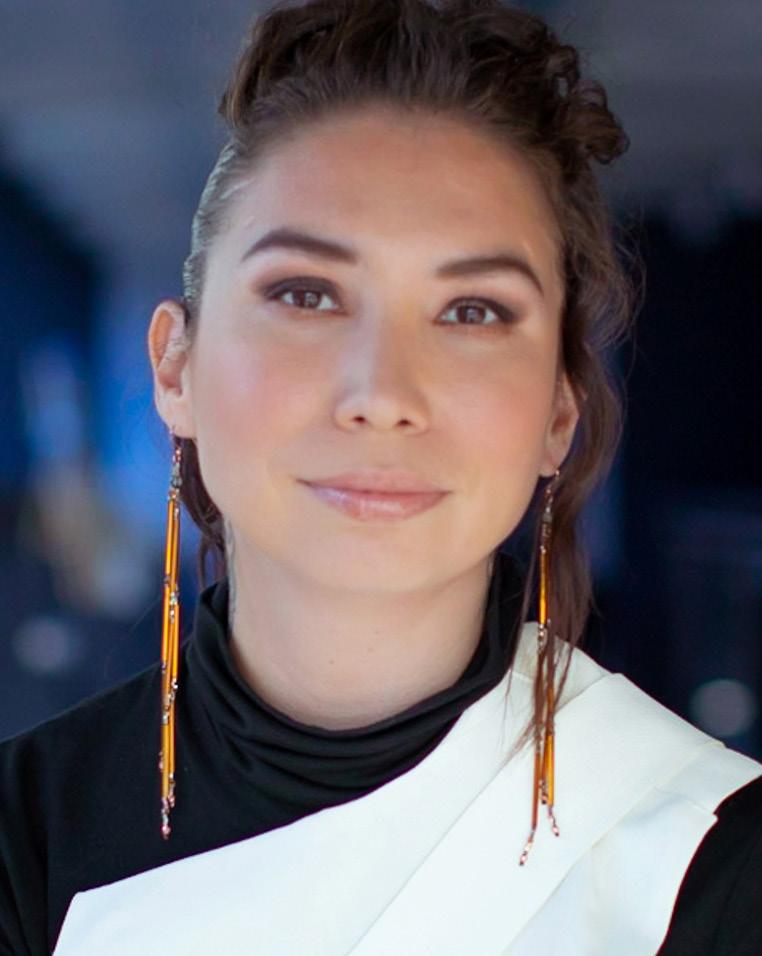
I've seen a lot of change in the fashion industry over the last couple of years. But I know there are definitely some areas that need to be focused on for Indigenous people and people who are generally left out of the industry. The way to include that perspective in the industry is by creating access, by diversifying what's available to consumers, and to audiences who are interested in witnessing fashion. Our communities bring many values to the industry, especially regarding things like sustainability. I was raised with many values that I think are universal but seem to ring true in my community: only taking what you need and not leaving anything behind. And I think that can change processes, like how people are treated or how we take from the earth and how we give back to the planet and each other.
If you could say one thing to top fashion executives, what would it be?
I would tell them to come to the Indigenous Fashion Arts Festival (IFA) and listen and really take it in. I don't want to sit here and tell them what they should do. But there's already a lot of really great work being done. And if they just come and be a part of our space, I think that can inspire and influence change.
IFA is a multi-platform festival. We have hundreds of designers who attend, so it really is a fruitful place to go. There's a lot to celebrate and experience, but there's also a lot to learn, and it's really about people listening. It's like, "Stop thinking about the profits for a second and think about strategizing about what those next steps are and how you want that to look." And if you're living in a vacuum, change will never happen. So step outside of that box and visit other people who are doing it differently.
Why is it essential to incorporate sustainability throughout the entire clothing lifecycle?

Overall, our clothes have a massive impact on the environment — from harvesting raw materials through processing the fabric to cutting and sewing and then end of life. Fashion brands must consider each stage of the lifecycle and the alternatives to reduce that impact. For example, choosing a plant-based or natural fabric that’s free from toxic chemicals can return to the earth after it’s no longer wanted.
The emissions generated from manufacturing our clothes make up nearly 80 per cent of a garment throughout its lifecycle, so more attention needs to be paid to the facilities where our clothes are made — do they use renewable energy or coal? Do
they have a wastewater treatment plan, or are they illegally dumping toxins into nearby waterways? And they need to make less clothing so that what they do make sells through and doesn’t end up going into the landfill. Brands need to adopt more circular business models such as repair and reuse as well.
What do you think the future of fashion will look like? Innovation and technology are huge drivers of sustainability, and I think this will only grow over the next five years — from traceability apps that allow a brand to find out where their clothes are made to bio-based materials. I also think circularity will play a much bigger role as more brands are starting to explore repair and resale business models.
PAID ADVERTISEMENT Read more at truenorthliving.ca A SPECIAL INTEREST SECTION BY MEDIAPLANET
Lead
All images are from Getty Images unless otherwise credited. This section was created by Mediaplanet and did not involve The National Post or its editorial departments. Send all inquiries to ca.editorial@mediaplanet.com @MediaplanetCA Please recycle facebook.com/TrueNorthLivingCA
Publisher: Chloe Zinn Business Development Manager: Sarah Ferreira Country Manager: Nina Theodorlis Content & Production Manager: Raymond Fan Designer: Kylie Armishaw
Editor: Karthik Talwar
Q&A with
Drennan, Founding
Director of Fashion Takes Action
SUSTAINABLE FASHION: Q&A with Nikki Reed, Founder of BaYou with Love Q&A with Sage Paul, Indigenous Designer and Artist
Kelly
Executive
Shop BaYou with Love at bayouwithlove.com.
Why Smart, Sustainability-Minded Shoppers Are Making The Shift to Thrift

We all know the three Rs of waste reduction — reduce, reuse, and recycle. The Salvation Army Thrift Store has created its own unique version: refresh, recycle, and restyle. The three Rs never go out of style, after all.
By refreshing something pre-loved and giving it a second life, you can extend the lifecycle of usable goods while helping to generate funds that support local Salvation Army programs and services.
And when you have a household item or piece of clothing that you no longer use, you can donate it to cliehe Salvation Army Thrift Store, which is one of Canada’s largest clothing recyclers. Lastly, restyle — because thrifting allows you to be uniquely you, all while saving the planet and your wallet.
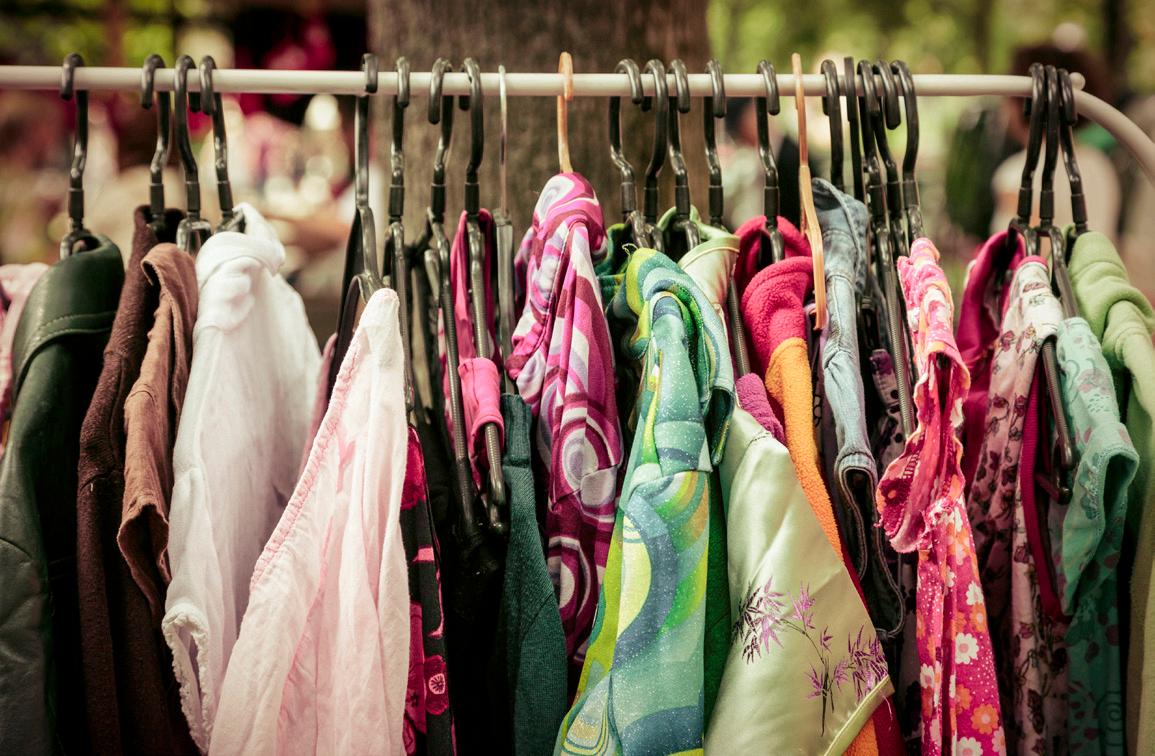
Business Development and Sustainability at The Salvation Army Thrift Store. “This helps to generate funds to support local programs, services, and emergency relief efforts in our communities.”
The Salvation Army Thrift Store has 98 stores across Canada and accepts donations at over 115 locations through its Donor Welcome Centres. It also proudly employs nearly 2,000 people from diverse backgrounds across the country, many of who are long-standing employees.
An environmentally conscious approach
The environmental impacts created through The Salvation Army Thrift Store’s unique model are impressive. Its approach directly supports the circular economy — which is all about retaining and recovering as much value as possible from resources by reusing, repairing, and recycling products and materials in an endless circle of sustainable and responsible use.
“Traditional fashion operates in a linear economy where they take, make, and dispose,” says Colyn. “The environmental consequences of that are far greater than many people realize. The circular economy is a new way forward from that linear economy.”
people experiencing homelessness, school programs and camps, addictions rehabilitation, emergency disaster services, and work preventing modern slavery and human trafficking. “The Salvation Army is the largest non-governmental provider of social services in Canada,” says Troughton. And every purchase and donation makes a positive impact on individuals and families in communities across Canada.
“Last year, we raised over $790,000 in additional support through our 98 thrift stores, all from the generosity of our guests, above the money we were able to generate from our operations,” says Troughton. “We also provided over 5,000 vouchers across the country at a value of $467,232. These vouchers give people in need the opportunity to come into our stores and have a dignified shopping experience at no charge and get the items that would most benefit them.”
The power of inclusion
Throughout its dedication to sustainability and creating a strong social impact, The Salvation Army Thrift Store is also focused on equity, diversity, justice, and inclusion. The charity is committed to creating a safe and welcoming environment where its shared communities — from its diverse employees and volunteers to its guests and donors — feel a strong sense of belonging.
Unlike for-profit thrift shops, The Salvation Army Thrift Store is purely a charity, so its impact is twofold — promoting environmental and social sustainability.
“We have a unique retail proposition,” says Ted Troughton, Managing Director of The Salvation Army Thrift Store. “We offer a high-value shopping experience, a place to recycle and donate unneeded items, and an opportunity to help care for those in need.”
“Through our thrift stores and donor welcome centres, we receive donations of gently used clothing, textiles, and household items,” says Tonny Colyn, Director of
The Salvation Army Thrift Store also plays a huge role in keeping products out of landfills. “We diverted an estimated 80 million pounds of clothing, household goods, and many other items from landfills last year,” says Troughton. This textile diversion kept 282,973 tonnes of carbon dioxide (CO2) emissions from the atmosphere and saved 46,845 kilolitres of water, all while generating funds that support local Salvation Army programs and services that are needed more than ever.
Promoting social sustainability The Salvation Army programs and services making a difference in communities across Canada include food banks, shelters for
“As part of that journey, we’re proud to be an official Employer Partner with the Canadian Centre for Diversity and Inclusion,” says Troughton. “This allows us to be more intentional about being more inclusive within our operations and our organization.”
And Troughton and Colyn stress that thrift is for everyone, regardless of who you are, where you come from, or how you identify.
The Salvation Army Thrift Store relies on donations of gently used clothing and household items and is in urgent need of donations. “A small thing like donating an old blouse or pair of jeans can really make a big difference, and if we all make that shift to thrift, we can help our environment, our neighbours, and the planet we all share together,” says Colyn.
Introducing The Salvation Army Thrift Store
PAID ADVERTISEMENT 2 | Read more at truenorthliving.ca A SPECIAL INTEREST SECTION BY MEDIAPLANET
The Salvation Army Thrift Store’s unique retail proposition offers both a positive environmental and social impact.
Tania Amardeil
Find a Salvation Army Thrift Store nearest to you at thriftstore.ca/ locations to make an impact in your community — shop or donate today.
This article was sponsored by The Salvation Army Thrift Store
A small thing like donating an old blouse or pair of jeans can really make a big difference, and if we all make that shift to thrift, we can help our environment, our neighbours, and the planet we all share together.
The circular economy is a new way forward from that linear economy.
Circular business models could help the fashion industry cut 143 million tonnes of GHG emissions in 2030 2
THE FUTURE IS CIRCULAR
In the circular economy, as much value as possible is retained and recovered from resources by reusing, repairing, and recycling products and materials in a continuing circle of sustainable and responsible use.1
RECYCLE & REUSE
The Salvation Army Thrift Store is working towards making secondhand the first choice in its communities by encouraging reuse and recycling through donating and shopping thrift.
Through life extension, The Salvation Army Thrift Store keeps usable goods out of landfill and reduces the environmental burden of the production of new goods.
REFRESH, RECYCLE, & RESTYLE FOR A BETTER FASHION FUTURE
Instead of finding their way to the landfill after just 7 uses, clothing and other items donated to The Salvation Army Thrift Store are reused, repurposed, and re-worn countless times, reducing the production of new goods and empowering these items to truly make a difference.
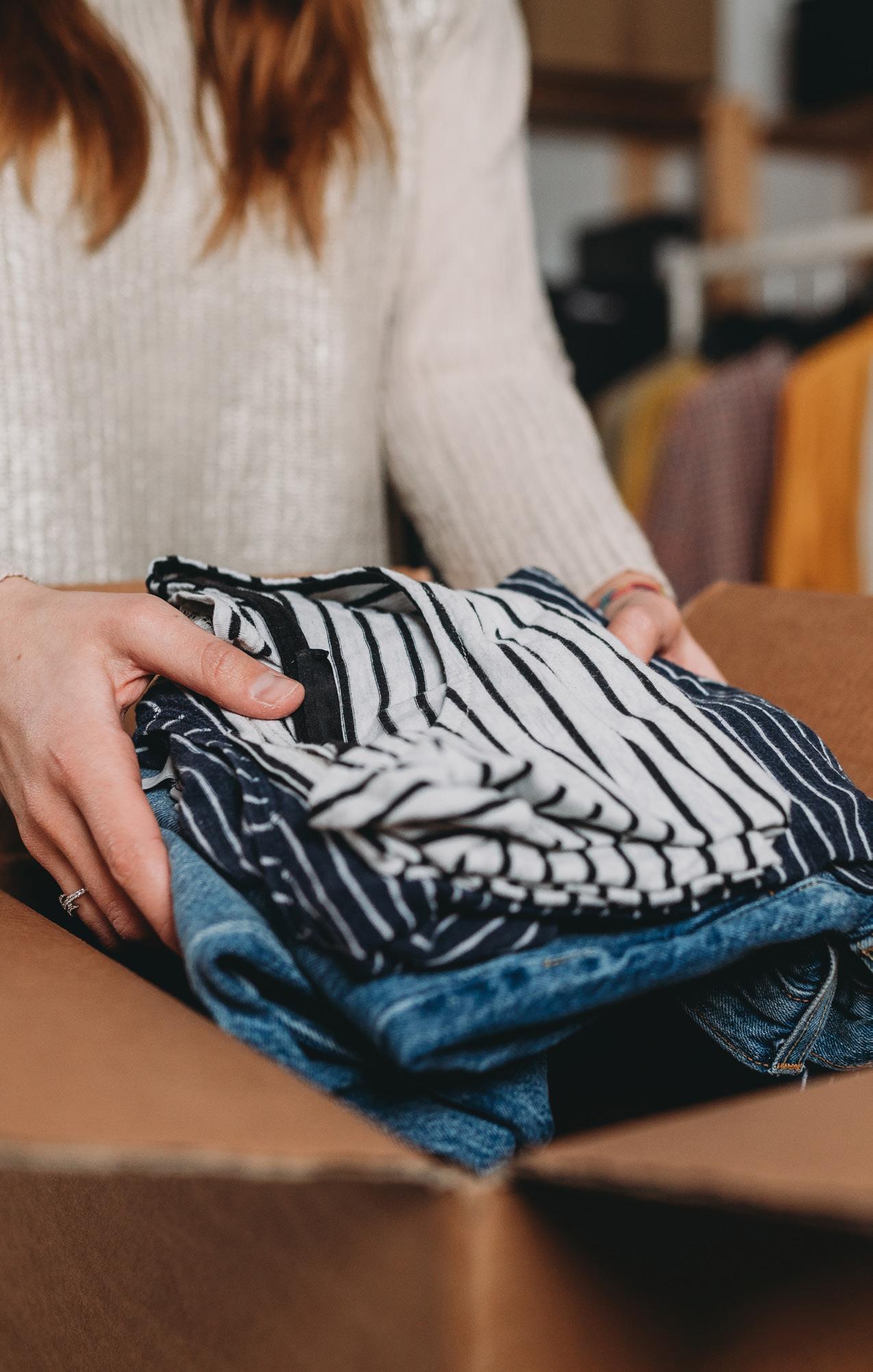
FASHION FAUX-PAS: TRADITIONAL LINEAR MODEL
A SPECIAL INTEREST SECTION BY MEDIAPLANET PAID ADVERTISEMENT Read more at truenorthliving.ca | 3
How George Brown College Is Setting a Fashionable (and Ethical) Example


For many, fast fashion is a budget-friendly option for updating their wardrobe. But unfortunately, fast fashion often benefits consumers at the expense of the environment and manufacturing workers. Recognizing the implications of this issue, George Brown College’s Fashion Exchange (FX) is working on sustainable solutions.

Local support, global impact
Located in Toronto’s Regent Park neighbourhood, the Fashion Exchange is tackling global problems while supporting the local community with training, research, and consulting support. Focusing on end-to-end sustainable production, the FX team champions a “make what you need attitude.” They encourage — and provide — digital software that maximizes fabric usage and reduces waste.
The Fashion Exchange also helps small, local companies bring their products to market faster and for a competitive price through its professional services. For Rosa Fracassa, Chair of the School of Fashion and Jewellery at George Brown, the idea of Canadian-made is the future. “We believe in creating fashion locally. Not only does this support the environment, but it also means we’re supporting ethical production that meets Canadian labour standards.”
Fashionable research
In recent years, George Brown’s School of Fashion and Jewellery and the Fashion Exchange have collaborated with industry partners on applied research projects. The Leading Innovation in Fashion Technology lab (FX LIFT) has the potential to transform the industry.
One of the technologies available at the FX LIFT is an EPSON dye sublimation printer for custom textile printing. This partnership with EPSON is an important step toward sustainable production because the printer is waterless and maximizes fabric usage. There’s more work to be done, but with George Brown’s focus on the environment, the next generation of fashion leaders will graduate knowing sustainability is the way forward.
A Glimpse into the Reality of Sustainable Fashion in the Era of Greenwashing
One of the major misconceptions about sustainable fashion is that we can buy our way to a more environmentally friendly wardrobe. There’s a constant stream of new brands and products promising to be sustainable, but very few live up to their marketing hype. While garments made from recycled and innovative materials do send the right message, they don’t necessarily address the root cause of our clothing crisis, overconsumption.
Most of us buy too many clothes and don’t hang on to them for long enough. The number of clothes the average consumer purchased increased by 60 per cent from 2000 to 2014, yet we’re only keeping them in our wardrobes for about half the time compared to 20 years ago. We feel more dissatisfied with our clothes than ever before. Once the excitement of a new purchase wears off, we’re told to donate and make room for more, often not knowing where our clothes even end up. This change in the way we treat our clothing is fueled by the ever-changing trends of social media and made possible by the cheapness of fast fashion.
We used to keep our clothing for decades, mending as we go and handing them down once we couldn’t wear them ourselves. Today, clothing is seen as temporary and disposable. In reality, the most sustainable thing we can do as consumers is to reassess our relationship with fashion. Being more conscious about how and why we shop is just as important as the actual products we buy. The next time you feel the urge to shop, try looking at your wardrobe and picking out items that can be mended, altered, restyled, upcycled, or swapped with a friend. When you do need something new, look for versatile and high-quality pieces that can be worn for years to come. The planet will thank you!
LaSalle College Vancouver Educates the Next Generation of Ethical Fashion Designers
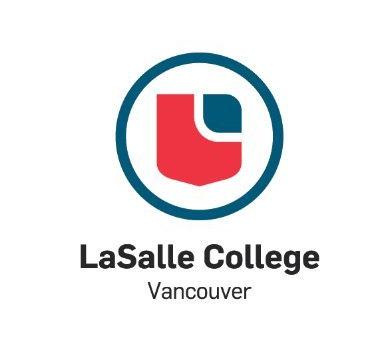
 Anne Papmehl
Anne Papmehl

Clothing has evolved from a basic human need to an art form, means of self-expression, and a big industry. However, as we’ve seen in recent years, the fashion industry comes with some high ecological impacts.
To help reduce the industry’s environmental footprint, LaSalle College Vancouver — a private post-secondary educational institution — recently added the Bachelor of Fashion Design with a focus on sustainability to its roster of academic programs. This threeyear degree program combines technical skills in pattern drafting, sewing, and production, with creative and applied research-based classes in textiles and an ecological sensibility.
Program focused on creating the next generation of ethical fashion designers Students in the program are challenged to think critically and develop responsible design collections where they take into consideration the ecological impact of their materials — from

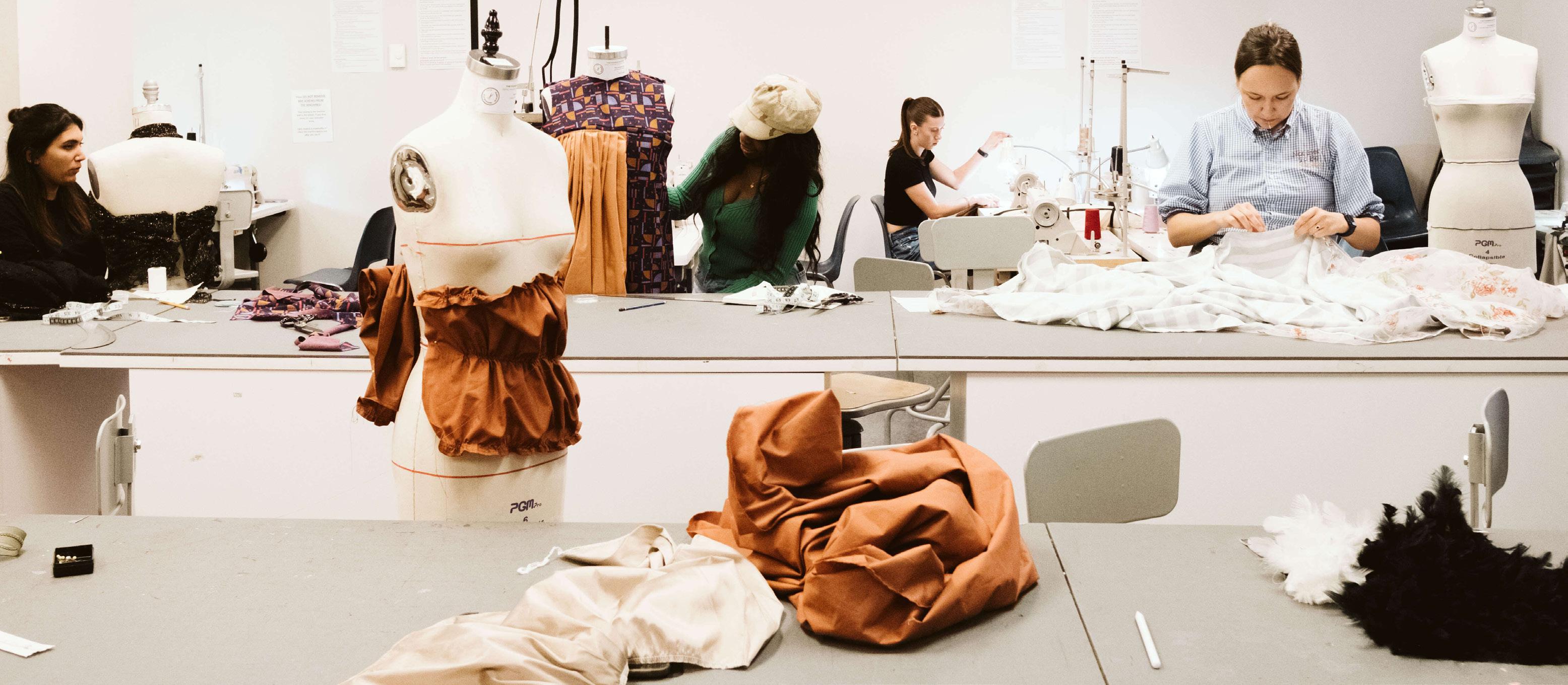
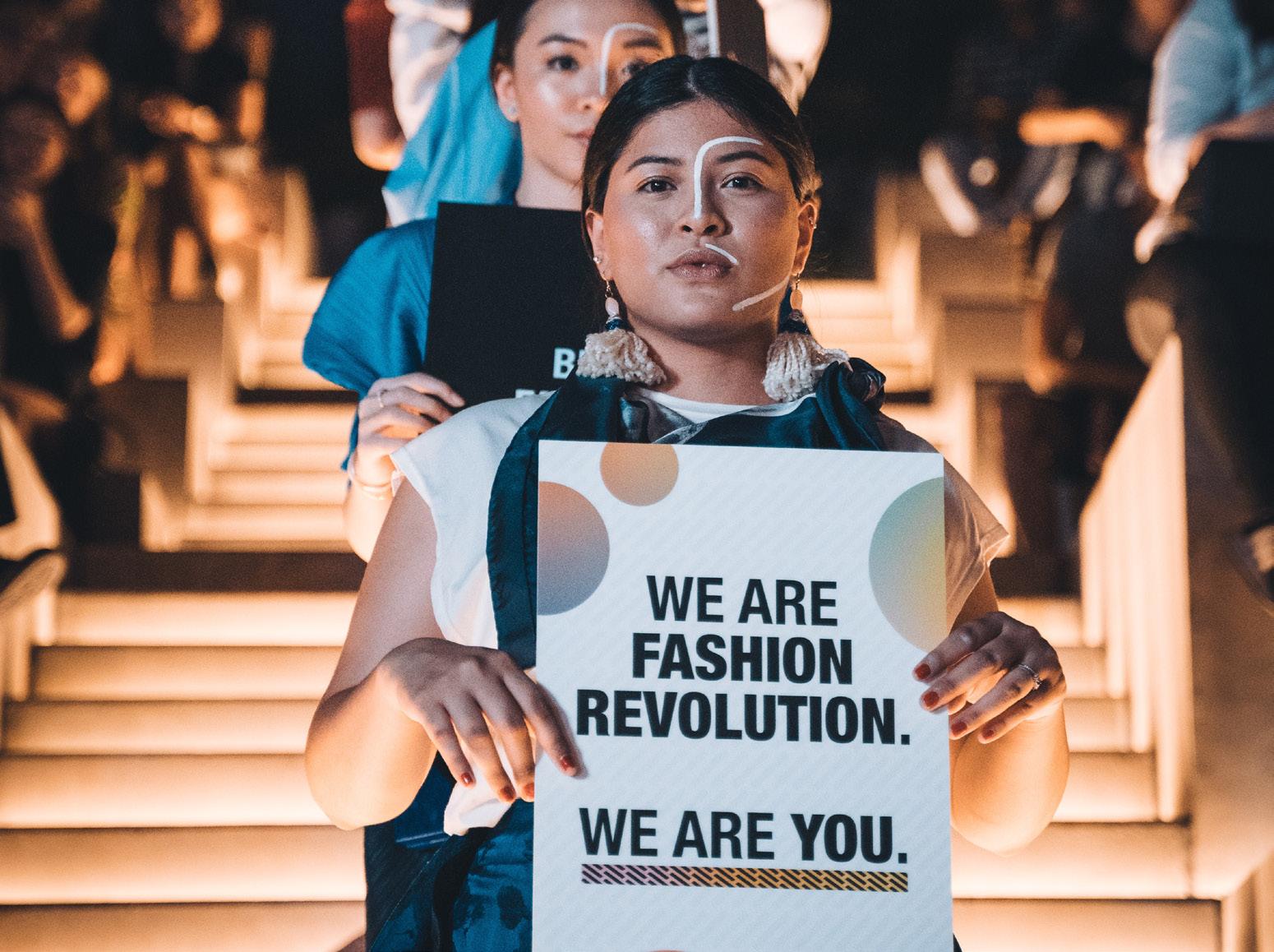
fibre content to production and distribution. In addition to focusing on sustainable design principles, such as fashion cycles, innovation, and the importance of quality and wear, the program provides students with the chance to work directly with industry professionals through the practicum component.
A key part of the curriculum is Zero Waste pattern drafting, where students are required to eliminate waste from design to production — a concept that has been a game changer for Anamaria Fuentes De Carvalho, a third-year student in the program. “It was a big shift because normally when we talk about sustainability, it’s about what happens when the fabric gets to its end of life,” says De Carvalho. “In the pattern drafting course it was amazing to learn how we could create a collection of jumpsuits, dresses, shirts, and pants all from a single rectangle with no fabric waste,” says De Carvalho, who credits the program with also helping her to find her sustainability voice. “I’ve worked with some of the major fashion brands in Milan, London, and New York, but
none of them offered a view of fashion as being sustainable, whereas here we’re constantly challenged to think about eco-responsibility and I plan to use that to inspire change in the industry,” she says.
New textile lab focuses on quality in manufacturing, creative re-use, upcycling and mending, and problem-solving Complementing the curriculum is LaSalle’s new Textile Design Lab, a state-of-the-art facility where De Carvalho works parttime as a tutor. “It lets students explore the broader language of textiles and the creative possibilities through access to fabric testing equipment — an embroidery machine, a felting machine — which re-works older fibres into felt fabric, and software to transform a design into stitching language,” she says.
Designing and making clothing is not only an art, but also an important life skill. However, with access to cheap, mass-produced clothing, consumers are losing their connection to how garments are made. “I’ve seen designers that don’t create their fabric any longer, but here in the bachelor’s degree program, rather than thinking of the aesthetic first, we’re exploring the possibilities of the fabric and its possibilities for the consumer and developing clothing that’s not only functional but also of high quality and responsibly made,” says De Carvalho. “I think in doing that we’re empowering ourselves and the consumers,” says De Carvalho.
For
information about the program, please visit: lasallecollege vancouver.com/ fashion-school/ fashion-designbachelor
article was sponsored by
PAID ADVERTISEMENT 4 | Read more at truenorthliving.ca A SPECIAL INTEREST SECTION BY MEDIAPLANET
Laura Mulrine
Alexia Khan
Rosa Fracassa Chair, School of Fashion and Jewellery, George Brown College
Alexia Khan Communications Lead, Fashion Revolution Canada
Anamaria Fuentes
De Carvalho Third-year student, Bachelor of Fashion Design, LaSalle College
This article was sponsored by George Brown College.
Visit georgebrown.ca/ fashion to learn more.
The Fashion Revolution is making fashion clean, safe, fair, transparent, and accountable. To learn more, visit fashion revolution.org
PHOTO COURTESY OF GEORGE BROWN
College’s new Bachelor of Fashion Design degree program combines practical skills, creativity, and applied research with an ecological sensibility.
LaSalle
This
more
PHOTO CREDIT:
LIANN HART
PHOTO CREDIT: FRANCOIS LE NGUYEN/UNSPLASH
Original designs from a Zero Waste Design Collection where students are challenged to reduce fabric waste in the Production Cycle
How an Ontario College Is Teaching Ethical Practices in the Fashion Industry
Fanshawe College's award-winning Fashion Design program has seamlessly integrated sustainability, diversity, and inclusion into all of its practices.
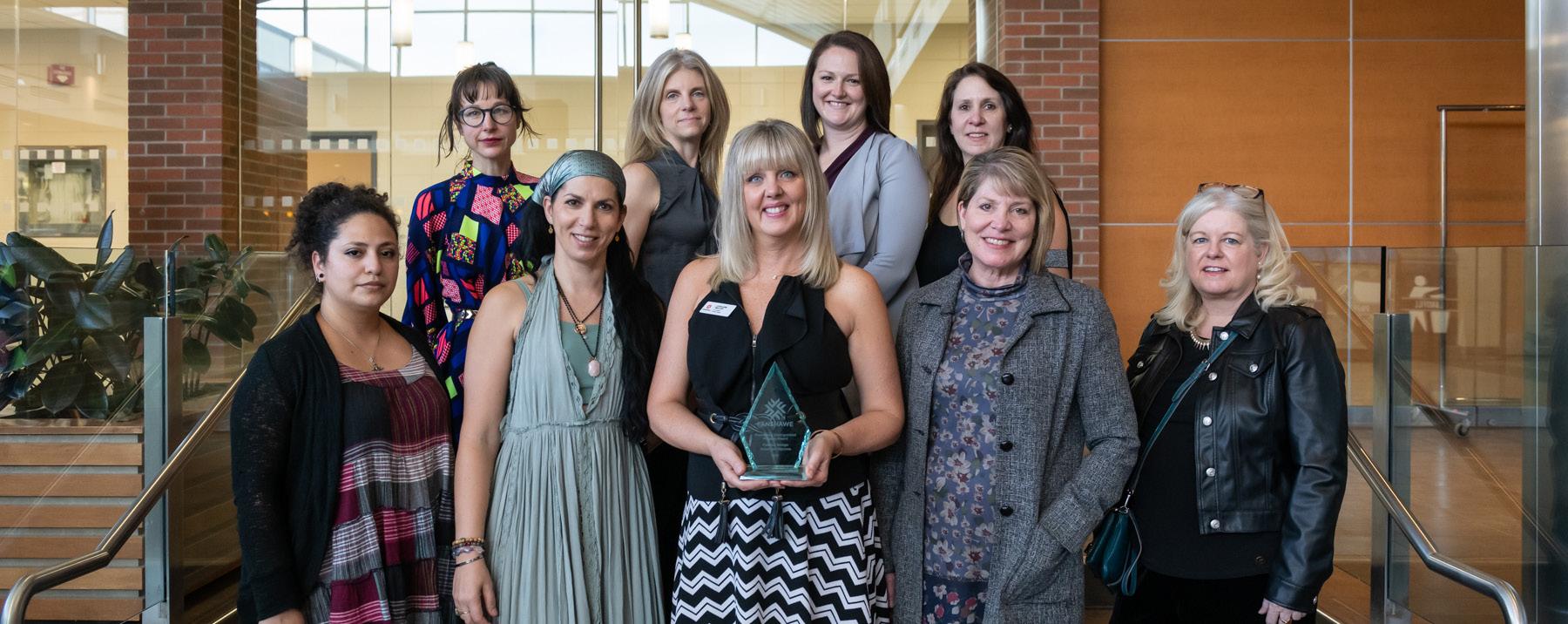
FANSHAWE COLLEGE’S FASHION DESIGN PROGRAM RECOGNIZED NATIONALLY FOR PROGRAM EXCELLENCE
Established in 1973, Fanshawe College’s Fashion Design program is a three-year advanced diploma that has evolved in lock-step with industry trends over the years with a recent focus on teaching graduates in slow fashion the principles of ethical, sustainable fashion and human-centred design.
The program’s dedicated team of faculty and staff work with internal and external partners to create exceptional learning
experiences for students, including live client assignments, co-op placements, innovative research projects, and exposure to industry leaders.
The longevity of Fanshawe’s Fashion Design program — now in its 49th year — speaks to the ongoing effectiveness of the program in meeting the evolving needs of both learners and industry.
In 2021, the Fashion Design program was recognized for its program innovation with
two prestigious awards: The President’s Distinguished Program Award and Colleges and Institutes Canada (CICan) Program of Excellence Silver Award.
“I’m proud to work with a diverse faculty team whose passions drive the evolution and innovation of our curriculum to be current, relevant, and student-focused,” says Leigh-Ann Waller, Coordinator of the Fashion Design program at Fanshawe College.

FROM THE RUNWAY TO THE BIG SCREEN
To learn more, visit
UNBOUND “Revival” 2020
Students from the Fashion Design program at Fanshawe College experienced the shift from traditional studio space to home-based design studios during the COVID-19 pandemic. Adaptability and resiliency emerged as themes alongside the original concept of sustainability in the fashion industry.
Unbound Revival takes a poetic glimpse at the challenges, adjustments, and successes of the class of 2020 as they transformed their educational experience because of COVID-19.
UNBOUND “Rosetta.exe” 2021
Rosetta.exe is a social and environmental impact film. An intelligent robot named Rosetta is created through facets of fashion, science, technology, design, and the arts. Rosetta represents a possibility for the future relationship between artificial and human creativity within nature.


By pairing the human spark for inspiration with the productive power and near limitless technical skill of AI, art and creativity as a whole can be elevated to new heights. Rosetta's story mirrors our own as we strive to make the choices that will one day reconnect us in an otherwise surreally distant time.
UNBOUND “One = People + Planet” 2022 ONE is a collaboration between Indigenous and non-Indigenous filmmakers and designers. Through the art of storytelling, this film brings the imagination of a young Indigenous girl to life as she sits by the campfire, reading the book

“One = People + Planet.”
Fashion doesn’t simply exist; it’s grown from the land, harvested from the sea, tempered by fire, and tested against the wind.
Fanshawe’s Fashion Design program provides experiential learning for its students with research opportunities through the application of practical knowledge studied in the classroom studio. For the past five years, in partnership with Goodwill Industries Ontario Great Lakes, students have participated in authentic workforce environments with a focus on apparel sustainability and circularity. This has been particularly actualized by Worth Worth (seetheworth.com) is a sustainable, circular fashion initiative that provides skills
training, jobs, and solutions — primarily re-manufacturing — for end-of-use, post-consumer textiles. It began as a research project conducted by fashion design faculty and powered by Goodwill Industries.
Through intentional design, empowering a workforce of skilled professionals and diverting textiles from landfills through circular processes, many real-life employment experiences have been gained by a wide range of students.
To date, Worth has provided 22 students with outside-of-the-classroom learning with support from five college faculty as mentors; and this will continue as MITAC funding for num-
erous internships until 2025 has been secured through the Goodwill Industries partnership.
Worth’s purpose is to foster sustainability for people, the planet, and the community. Mission-driven and sustained by Goodwill Industries, Worth transforms end-of-use textiles into new second-life products. In doing so, the brand offers skills training and decent employment at a fair wage with work in a safe environment to persons with barriers to employment, enabling them to move forward to self-sufficiency while diverting textile waste from landfills and creating a sustainable fashion brand.
A SPECIAL INTEREST SECTION BY MEDIAPLANET PAID ADVERTISEMENT Read more at truenorthliving.ca | 5
COVID-19 led to changes — from an in-person runway-style fashion capstone project to fashion films through collaboration by Fanshawe College students and faculty. These films were produced by students mentored by faculty from the Fashion Design, Fashion Marketing and Management, Music Industry Arts, Photography, Film and Visual Effects, and Editing programs.
IT’S WORTH IT: THE PARTNERSHIP PAVING THE WAY IN TEXTILE RESEARCH
This article was sponsored by Fanshawe College
fanshawec.ca/ fashion
Follow Worth on Facebook and Instagram @seetheworth
Leigh Ann Waller Program Coordinator, Fanshawe College
Seasons Change, but Inequality Still Woven into the Fabric of the Fashion Industry
One year on, what has changed? Fashion trends come and go as quickly as seasons change, yet the reality for the women who make our clothes remains the same — they do not earn enough to live a decent life. Despite the increased cost of living everywhere, fashion brands still have not committed to paying garment workers enough money to cover the basics — like food, water, and decent shelter.
Living wages are a human right, but poverty wages continue to be sewn into the very fabric of the garment sector. Wealth inequality is starkly illustrated in the garment sector, where a privileged few amass vast wealth while millions are trapped in the cycle of poverty. On average, top executives of Canadian fashion brands are paid $18,562 per day, while the women making clothes in Asia earn as little as $5 per day.
How transparent are your favourite brands?
Oxfam Canada’s What She Makes campaign asks companies to publicly disclose where they source their products so that consumers, human and labour rights organizations, investors, and regulators can ensure their rights are respected. With many global brands taking action to improve transparency within their supply chains, we rated five of Canada’s leading brands — Aritzia, Herschel Supply Co., Joe Fresh, lululemon, and Roots — to see how they stack up.

Great news — lululemon leads the pack and has done excellent work disclosing its supply chain details by providing factory names, locations, product types, and even the breakdown of workers by gender in each factory! Joe Fresh took significant strides to improve transparency by publishing factory names and locations but could go further by publishing more details like product
types, number of workers, and breakdown by gender.
Unfortunately, Aritzia, Roots, and Herschel Supply Co. fell below the bar and haven’t taken significant action toward becoming more transparent. Transparency is key to implementing an ethical business model and a critical milestone to paying living wages to the women who make our clothes across the supply chain.


Things companies say and how to respond

In the past year, consumers have made a huge difference and caught the attention of these five brands. They stood up for the women that make our clothes and for more sustainable practices.
To help consumers respond when fashion companies tell them about where their clothes are made and what they pay their workers, we released a quick explainer. Learn more about what’s missing in Canadian fashion brands’ responses and take action online by telling them you stand with #WhatSheMakes and demanding they make a credible, public, time-bound commitment to paying a living wage.

A fundamental change for good Ethical fashion is not only in season; it’s trending. Why? Because sustainability is not just a hashtag, it’s a lifestyle. We all buy clothes, so let’s use our voices to demand the brands we love to do better. Brands care about what their customers think, so let’s use our power as consumers to demand that Canadian brands pay a living wage.
Join us by taking the pledge to call on Canada’s leading brands to commit to paying living wages and being more transparent in their supply chains.
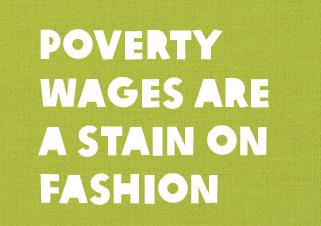
more,
Is
Clothing Impacting the Environment? Act Now
From the rippling waters of our lakes to bottles and cups filled up to the brim, water ensures that every life form, from the smallest bacteria to the largest elephant, survives.
And yet, humanity’s clothing system is poisoning water bodies.
Through washing, synthetic materials in clothes release tiny microplastics into the water, which evaporates and descends in the form of rain or snow. At the same time, it takes 2,700 litres of water to grow enough cotton to produce a T-shirt.

All living beings are affected, but damage to the aquatic ecosystem puts this into perspective. In addition to evaporating and falling as rain or snow, these microplastics are so tiny that fish eat them accidentally, causing them to fall sick or even die.
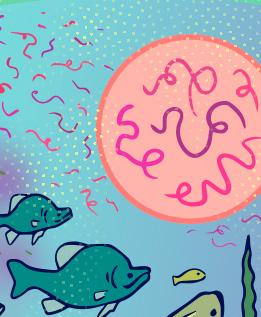
And the fertilizer needed to cultivate cotton? It can end up in the water system, causing algae to grow out of control. As a result, the algae overgrowth blocks sunlight, kills fish and plants, and pollutes drinking water. So what can be done?
Youth making waves across Canada Many young Canadians are stepping up to the challenge of correcting this wrong. But first, they need to know where to start. Climate change can feel overwhelming to many young people, and once they begin learning about it, anxiety can overcome them.
Youth need to have a sense of power in how they respond. They need to rediscover hope.
empowers youth and allows them to make a meaningful systemic change through climate science.

At the same time, a group of students from the University of Sherbrooke started Hoola One, a company that designs special vacuums to clean up microplastics. In addition, they’re working on several other projects to restore the affected ecosystems.
They can find that hope through Let’s Talk Science’s youth-driven Clothing4Climate action project. While exploring the complex relationship between water and the clothing system, youth may discover relevant solutions, such as how to build a water filter.
Making their own decisions and discovering their voice, Clothing4Climate
In Ottawa, a group of students wanted to create a sustainable way to address the water crisis affecting Indigenous communities. Their solution was Project Nibi, a social enterprise that works with communities to test their water, identify purification solutions, and take ownership of their drinking water.
While the past may have long hidden the relationship between water and clothing, youth are making waves and ensuring that our waterways are poison-free for future generations.
PAID ADVERTISEMENT A SPECIAL INTEREST SECTION BY MEDIAPLANET 6 | Read more at truenorthliving.ca
We need water, and we need clothes. But the two struggle to co-exist;
Your
here’s why.
Michael Marti & Megan Walter, Let's Talk Science
This article was sponsored by Let's Talk Science. To learn more about Clothing4Climate, visit letstalkscience.ca ILLUSTRATIONS COURTESY OF LET'S TALK SCIENCE
Youth are making waves and ensuring that our waterways are poison-free for future generations.
Oxfam Canada’s What She Makes campaign continues to tackle inequality by calling on Canadian fashion brands to be transparent about their sourcing.
Mwangala Matakala
CANADA
PHOTO COURTESY OF
OXFAM
To learn
visit oxfam.ca/ what-she-makes and take the pledge so together we can hold Canadian brands accountable for This article was sponsored by Oxfam Canada
Mwangala Matakala Campaigner, Oxfam Canada
Transparency is key to implementing an ethical business model and a critical milestone to paying living wages to the women who make our clothes across the supply chain.













 Anne Papmehl
Anne Papmehl

















